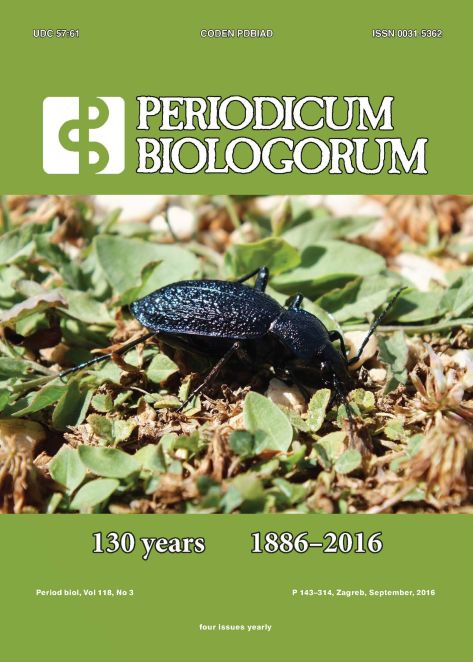Mite infection of Carabus violaceus in rural forest patches and urban parks
Abstract
Background and purpose We investigated phoretic mite (Acari: Mesostigmata) infection of Carabus violaceus (Coleoptera: Carabidae) in rural forest patches and urban forested parks in and around Debrecen city, Hungary. We hypothesized that the prevalence of mite infection, mean abundance, mean and median intensity of mites is higher in rural forest patches than in urban parks.
Materials and methods We collected C. violaceus individuals using live-capture pitfall traps and preserved them frozen. We identified and counted each mite of the host beetle individuals. Chi2, Bootstrap t-test, Mood’s median test were used.
Results We trapped altogether 199 C. violaceus individuals (101 in the rural forest patches and 98 in the urban parks). There were 250 phoretic mite individuals on the C. violaceus representing two species (Poecilochirus carabi, Macrocheles glaber). We found 224 mite individuals in the rural forest patches, and 26 in the urban parks. We found that the prevalence, mean abundance, mean and median intensity of phoretic mites were significantly higher in the rural forest patches, than in the urban parks.
Discussion The studied phoretic mite species use beetles only for transfer and not harming them. Thus, the prevalence and mean intensity of these species depend primarily on the number of available prey density. The cause of decreased number of these phoretic mite species in the urban forest patches should be investigated in more details analysing the effect of disturbance due to urbanisation on a mite fauna and evaluating mite infection on carabids as potential bioindication of habitat disturbances or degradation.
Keywords: urbanization, prevalence, Mesostigmata, live-capture traps
Downloads
Additional Files
Published
Issue
Section
License
The contents of PERIODICUM BIOLOGORUM may be reproduced without permission provided that credit is given to the journal. It is the author’s responsibility to obtain permission to reproduce illustrations, tables, etc. from other publications.


